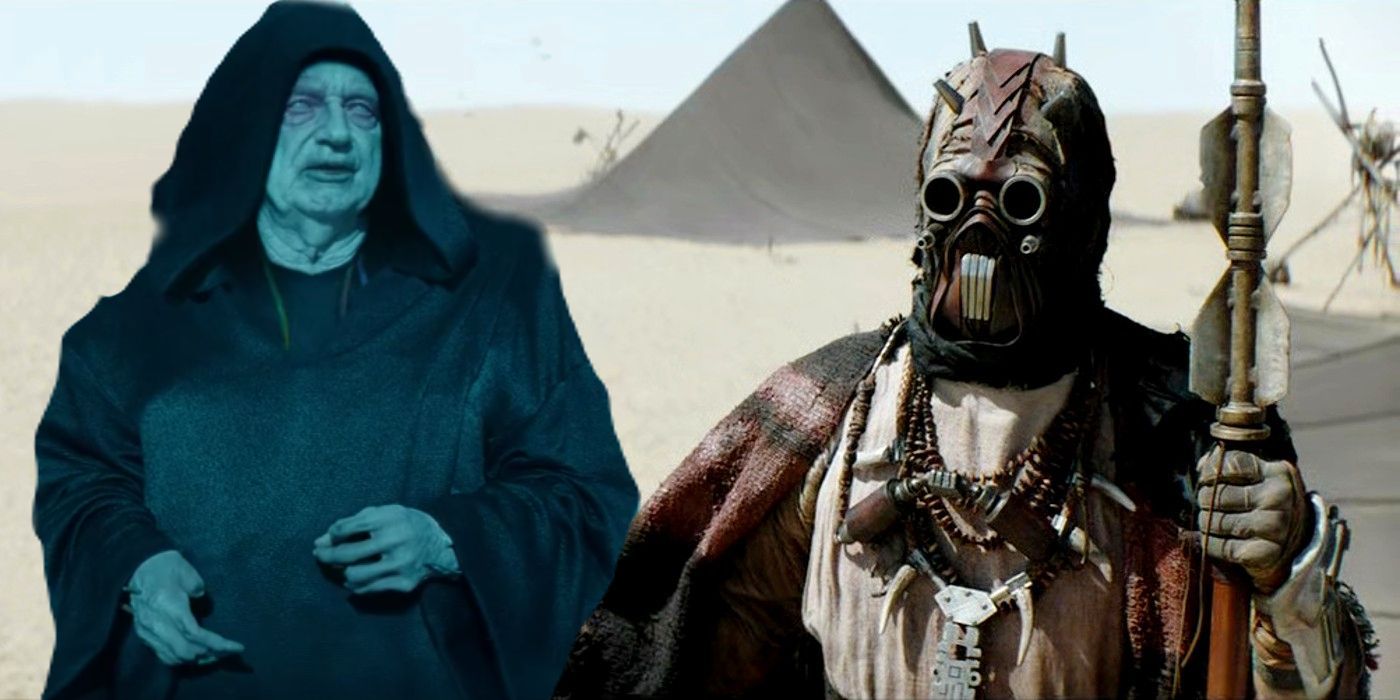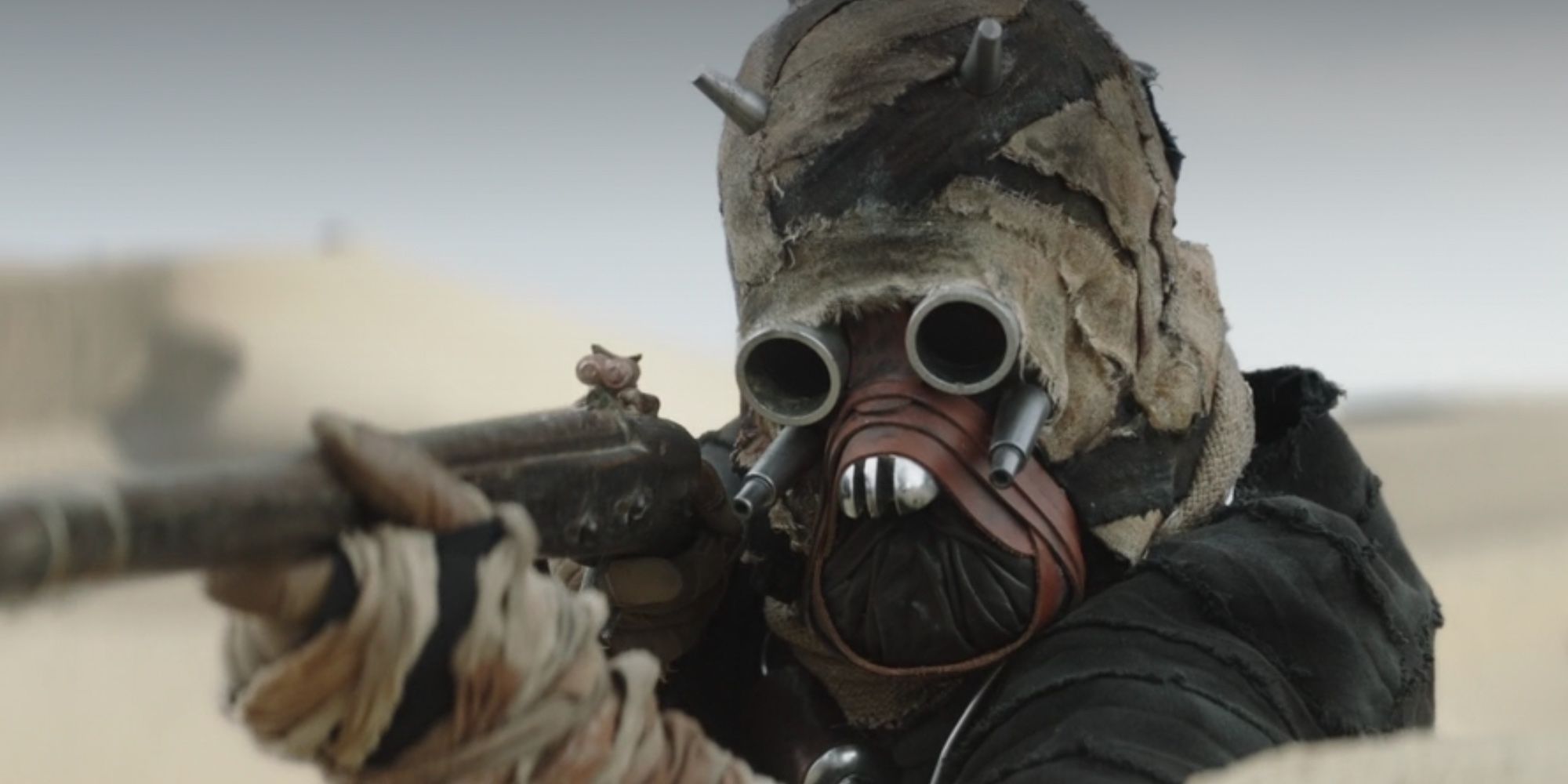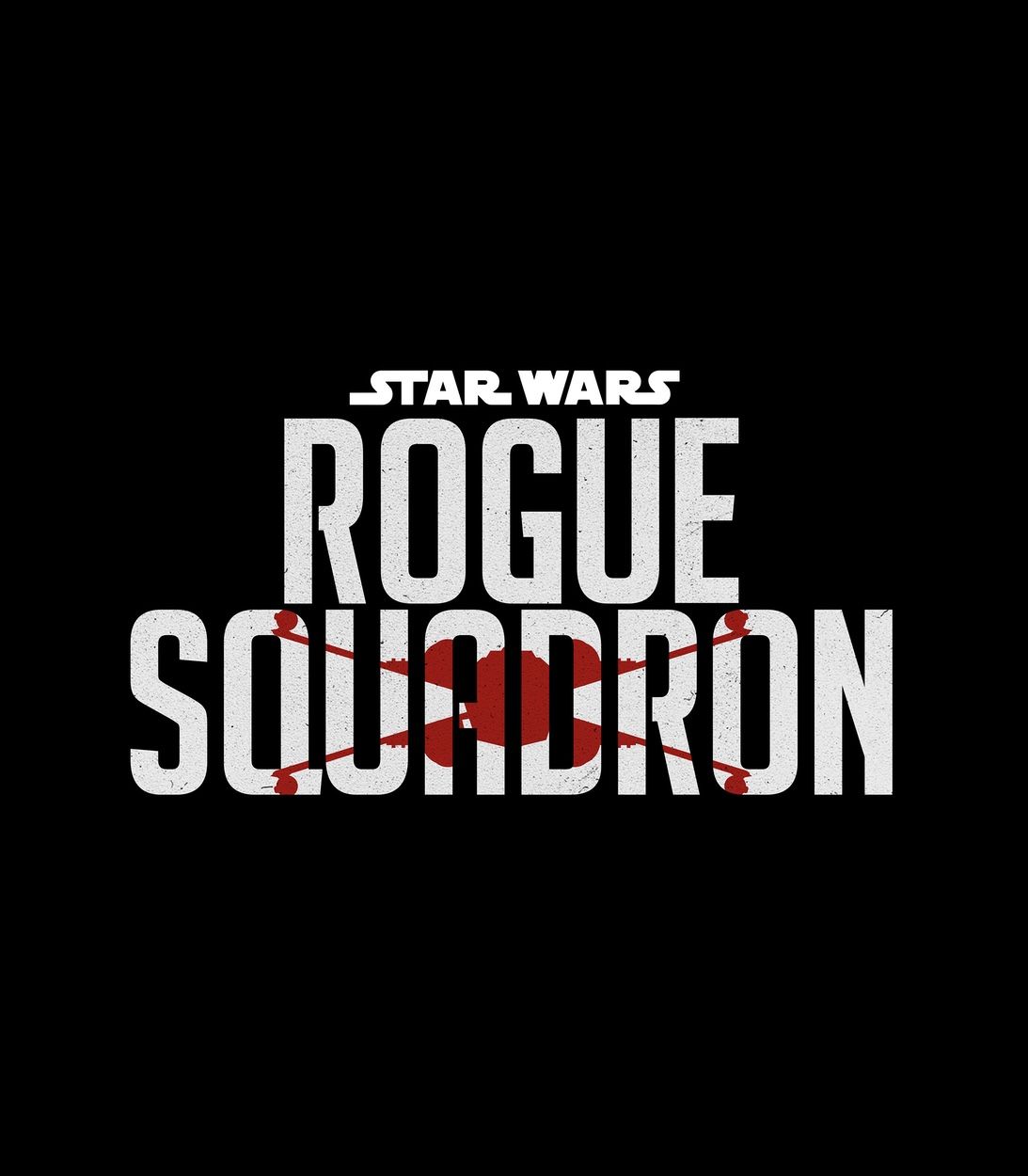Warning: Contains SPOILERS for The Book of Boba Fett
The Book of Boba Fett achieved what Star Wars Episode IX: The Rise of Skywalker never could: it reworked a classic villain in a compelling way. The series was notable for its introduction of the Tusken Raider clan in episode 1, though they looked slightly different to how they were presented in the original trilogy and prequel films. The Book of Boba Fett redefined these classic antagonists, where The Rise of Skywalker failed to bring back its main villain, Emperor Palpatine, in a manner that was at all satisfying.
The Book of Boba Fett episode 1 introduced audiences to a new clan of Tusken Raiders, which also featured Tusken children. The group took the former bounty hunter as their slave after he escaped the sarlacc pit. However, Fett (Temuera Morrison) was able to gain their respect and eventually help them take down a gang that was slaughtering their people. Much time was spent with these Tusken Raiders until it was tragically revealed in episode 3 that they were killed by the Nikto gang.
The introduction and presentation of the Tusken Raiders was a far cry from how Emperor Palpatine was utilized in The Rise of Skywalker. Audiences got to know the Tuskens, despite their limited dialogue. As Fett spent so much time with them, viewers were able to form an attachment to them, especially the young Tusken child. The same could not be said of Emperor Palpatine, who was haphazardly reintroduced in the final film of the sequel trilogy without any build-up in the two prior movies. As such, his appearance felt rushed and unearned, unlike the Tuskens who were introduced slowly and organically.
Where the appearance of Emperor Palpatine felt like a cynical marketing ploy in The Rise of Skywalker, the Tusken Raiders of The Book of Boba Fett felt essential to their story. Though the series could rely too much on existing Star Wars iconography, their presence was a welcome one because it felt earned. By contrast, the death of Supreme Leader Snoke as a ploy to subvert audience expectations, only to reintroduce Palpatine at the last second, felt synthetic and disingenuous.
Amazingly, The Book of Boba Fett made viewers feel sympathy for the Tuskens. They'd previously been presented as savages and frightening monsters. Yet, the series cleverly kept this portrayal intact by forcing Boba to impress the tribe, leading them to treat him as one of their own. This allowed audiences to see a gentler, prideful side to the Tusken Raiders while still keeping consistency with their other canonical appearances. It was a far cry from the reintroduction of Palpatine, which not only undercut his death and Darth Vader's sacrifice in Episode VI: Return of the Jedi, it diminished his on-screen presence in previous films, as audiences were aware that their favorite antagonist's eventual fate would be so poorly implemented.
The Book of Boba Fett worked hard to carefully introduce its Tusken Raider antagonists and develop them into beloved side characters, as viewers' perceptions of them shifted as Fett's did. Disney and Lucasfilm had clearly learned their lesson after introducing Palpatine in such an inorganic and ineffective way in The Rise of Skywalker. The former benefitted from excellent flashback sequences that redefined classic characters in the Star Wars universe, while the latter turned a beloved Sith Lord into a shell of his former self.
Episodes of The Book of Boba Fett stream Wednesdays on Disney+



